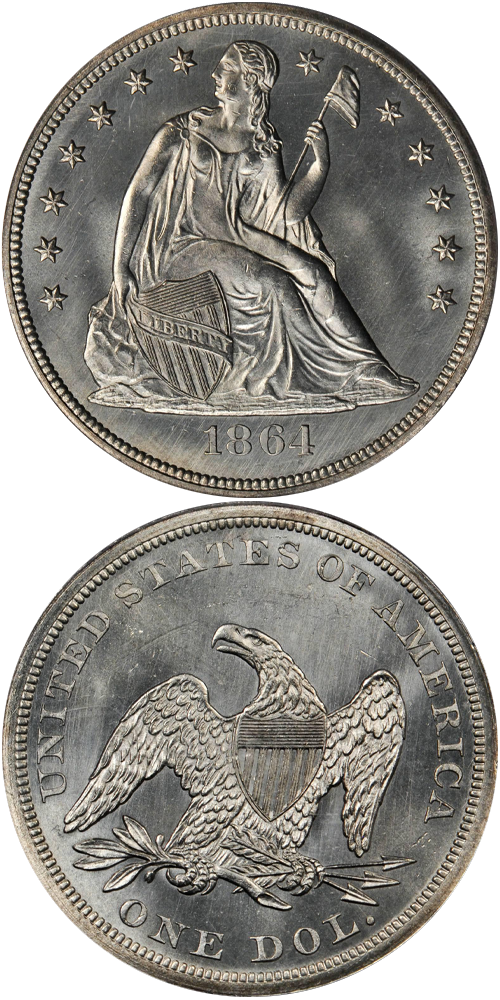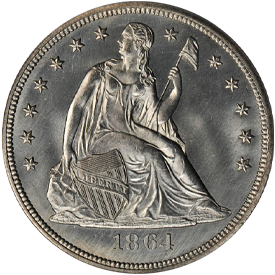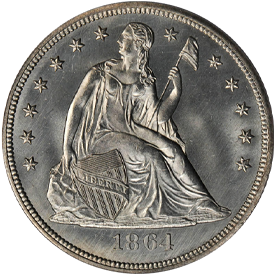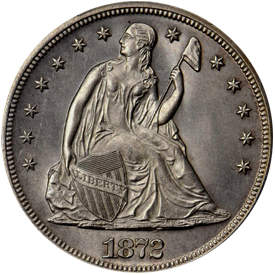After numerous patterns, trial strikes and a limited mintage for circulation made during the 1836-1839 period, regular production of the silver dollar resumed in 1840 with the Philadelphia mint striking 61,000 pieces that year. The coins were engraved by Robert Hughes, following Christian Gobrecht’s models, and featured stars on the obverse around the seated liberty figure.
The reverse however was all new, abandoning the flying eagle motif seen earlier and instead substituting an eagle perched holding an olive branch and arrows, with a shield at center. This design was shared with both the quarter and half dollar and lent uniformity to all higher denomination silver coins.
The reduction in weight seen on silver minors in 1853 was not implemented on the dollar coin, and no arrows were seen. The only change made to the Liberty Seated Dollar during its 33-year run came following the Civil War, when in 1866 the motto IN GOD WE TRUST was added on a ribbon above the eagle on the reverse.
Mintages of Liberty Seated dollars was always modest (especially compared to the later Morgan dollar series) seldom exceeding 100,000 pieces annually. Most years saw mintages in the five-figure to mid-six figure range and quite a few of these were later melted. The silver dollar was a large coin, and shunned by most Easterners. They circulated more widely in the West, but the population in that region was relatively low throughout this period.
Like most U.S. series, there are several “key” dates and several “nearly impossible” dates, so a complete date and mintmark set is out of reach for most collectors. Key dates include the 1851, 1852, 1858, and the 1873-CC. At or approaching the “impossible” category are the 1866 No Motto and the 1870-S.









